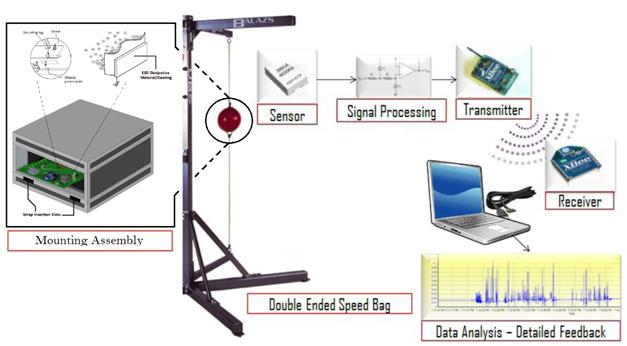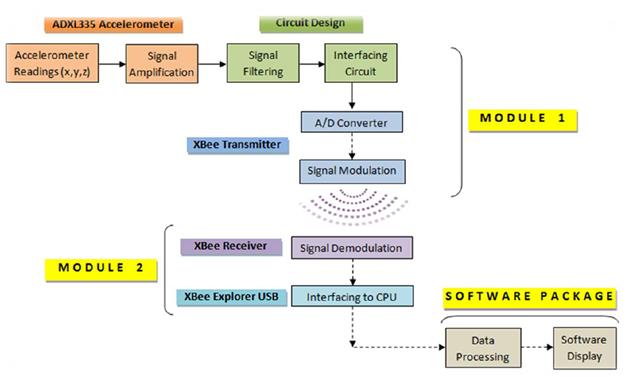Project Overview

The Smart Speed Bag System is a good example of a Mechatronic system. It includes aspects of electrical, mechanical, systems design, and software engineering. An accelerometer is connected to the speed bag using a carefully designed mechanical fixture. The fixture mitigates interfering vibrations and static charge buildup. It also contains signal conditioning circuits as well as a wireless transmission chipset used to transmit data to the nearby computer. A matching wireless receiver is connected to the computer using the popular USB standard. A sophisticated custom-built software package handles data analysis and display. The final result is an improved, thoroughly documented workout experience useful to both boxers and trainers.
Project Block Diagram

The Smart Speed Bag System can be broken into 3 distinct modules. The first module (contained by the mounting assembly) consists of an ADXL335 accelerometer, a signal filtering circuit, as well as a XBee wireless chipset and associated interfacing circuit. The accelerometer and XBee chipset consume very little power (the XBee consumes as little as 2mW) and are inexpensive and readily available. In addition, the accelerometer is capable of detecting acceleration in all three axes. Our engineering estimate for the lifetime of the battery (Li-on button cell) powering the first module is 245 hours.
The second module consists of a XBee receiver and a XBee USB Explorer board. The receiver chipset is designated as the network coordinator, monitoring and troubleshooting all wireless transmission. Module 2 relies heavily on Module 3: the software package. The software package contains a back-end process that is always active, facilitating XBee initialization and message handling routines, as well as organizing the data received into databases. The front-end (user interface) software communicates with the back-end process as required to display meaningful feedback and statistics to end-users.